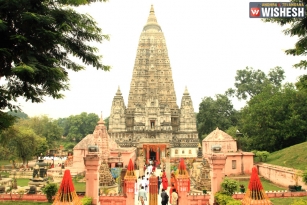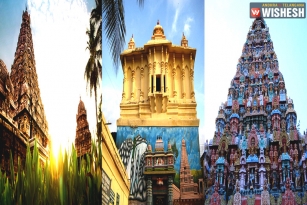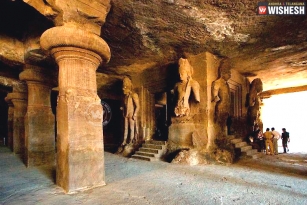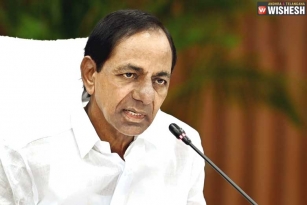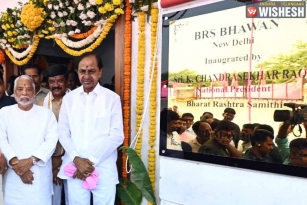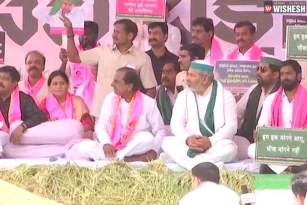
Humayun’s Tomb, New Delhi:- Humayun’s Tomb, as the name suggests is the final resting place of the Mughal Emperor Humayun. It is the first garden tomb in the Indian subcontinent and is located in the Nizamuddin East area of Delhi.
In the year 1569-70, this splendid piece of architecture was commissioned for construction by Humayun's chief consort empress Bega Begum. The tomb is one of the very few structures that used red sandstone on such a massive scale at that time. Typical Mughal architecture with Persian influences pertains to the design of the tomb, which was conceptualized by Persian architect Mirak Mirza Ghiyath.
In the year 1993, Humayun's Tomb was featured in UNESCO's World Heritage List, owing to its magnificent design and illustrious history.
This magnificent tomb sits in the middle of a huge, ornate Mughal Garden and its beauty is only enhanced during the winter months. Situated on the banks of the River Yamuna, this burial chamber is also home to the remains of many other Mughals, including his wives, son and descendants of the later Emperor Shah Jahan, as well as numerous other subsequent Mughals. Its incredibly ornate design and careful construction set the tone for all Mughal architectures to come.
- How To Reach
Humayun’s tomb is situated very near to the Nizamuddin railway station, which is 2.8 kilometres away. Taxis, bus and auto rickshaws are available outside the station. This tomb is quite near to Sarai Kale Khan Bus Depot which is about 8 kilometres away. Autorickshaws are available outside the bus stand. The nearest metro station to this destination is the Jawaharlal Nehru metro station on the violet line.
- Open Time: 10:00 AM - 06:00 PM
- History

Humayun’s body was initially buried in Delhi’s Purana Qila after his death on 20 January 1556. The death of the emperor caused great agony to his chief consort Bega Begam, who vowed to create the most resplendent burial chamber in all of the empire. In 1565, nine years after his death, the construction started and at a cost of 1.5 million rupees at the time which was borne by the empress alone, was completed in 1572 A.D. The tomb along with the Purana Qila served as an asylum for Muslims migrating to Pakistan, during India’s partition. However, the monument was subjected to vandalism, during this time, which defiled the structure greatly.
To restore its former glory, the Archaeological Survey of India took it upon itself and this process was accelerated when Humayun's Tomb got featured on UNESCO’s World Heritage List.
- Architecture Of Humayun’s Tomb

With smatterings of Indian elegance, the structure of the tomb is a mix of Islamic and Persian architecture too. The six-sided stars that embellish the main opening on the west, are also seen on the main tomb structure, though it has been used as a patterned galactic symbol. The mosque also has the tomb of Emperor's beloved barber. This tomb houses over 100 gravestones and the entire base structure is elevated on a stage, a few steps high.
- Char Bagh Garden

A Persian style garden with a geometric layout, the Char-Bagh is divided into 4 square walkways, giving it the name, Char Bagh. The four squares are further subdivided into smaller pathways, creating 36 squares. Beneath the ground,flows the central water system feeding the mini fountains without appearing at the surface. On the three sides, the garden is enclosed within rubble walls, while the fourth opening serves as an inlet to the river Yamuna, which unfortunately no longer flows here.
- Other Monuments In The Complex
1) Tomb And Mosque Of Isa Khan

This is the mausoleum complex of Isa Khan Niyazi, who was an Afghan noble in Sher Shah Suri’s court. He was actually an adversary of the Mughals and had fought against them. during the reign of Islam Shah Suri, son of Sher Shah, the octagonal tomb was built. It is surrounded by an octagonal garden and later went on to serve as the burial place for Isa Khan’s family as well.
2) Bu Halima’s Tomb And Garden

This attraction is located towards the western entry of Humayun’s tomb.
3) Afsarwala Tomb And Mosque

Afsarwala was a noble in Akbar’s court, and his tomb is located towards the southwest end of Humayun’s Tomb. djacent to the tomb is a mosque which is also believed to be dedicated to Afsarwala. These constructions belong to the period of 1566-67 CE.
4) Arab Sarai

This was a safe house meant for craftsmen doing construction work.
5) Nila Gumbad

Right outside the boundary of the complex is the Nila Gumbad or “Blue Dome”, which is embellished with blue tiles. It has a unique structure which is octagonal from the outside and is a square from within. It was built by Abdul Rahim Khan-I-Khana who was a courtier in Akbar’s court for his servant Miyan Fahim.
6) Chilla Nizamuddin Auliya

(Image Source: Tripadvisor.com)
This was meant to serve as the residence of Delhi’s patron saint Nizamuddin Auliya, and is located right outside the complex.
7) Humayun’s Barber’s Tomb

This structure is located towards the south east corner within the Char Bagh. It is not known to whom does this tomb belong, however, locals believe that it is the final resting place of Humayun’s favorite barber.
SUPRAJA






